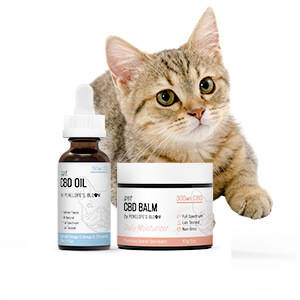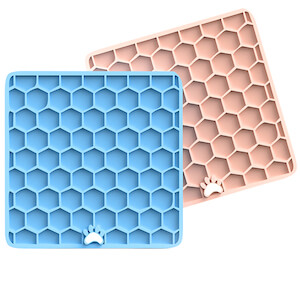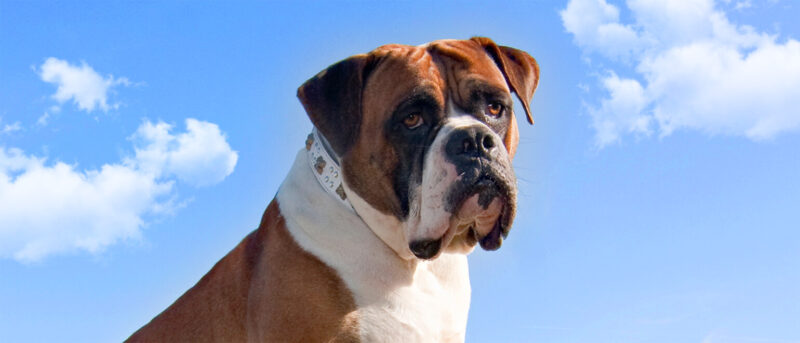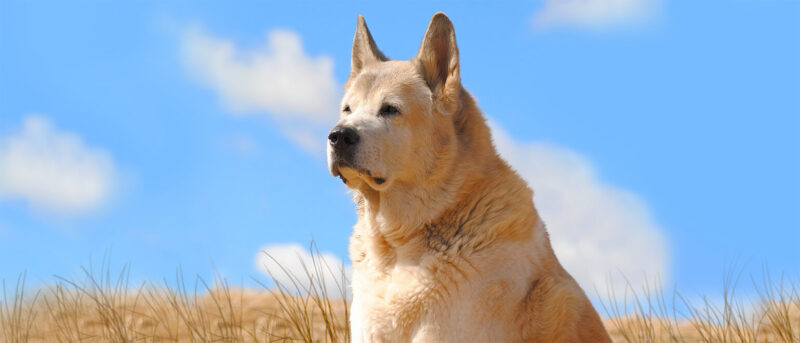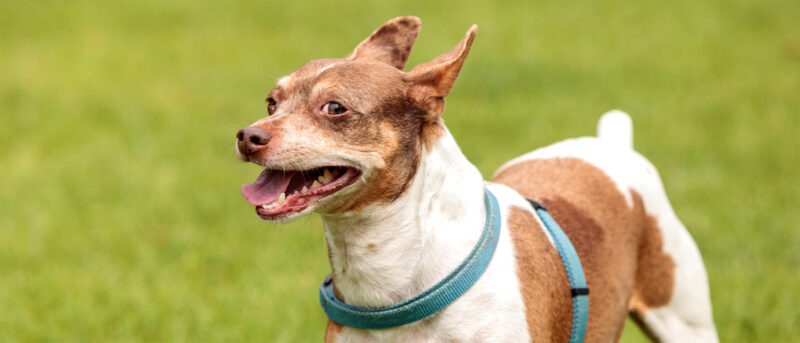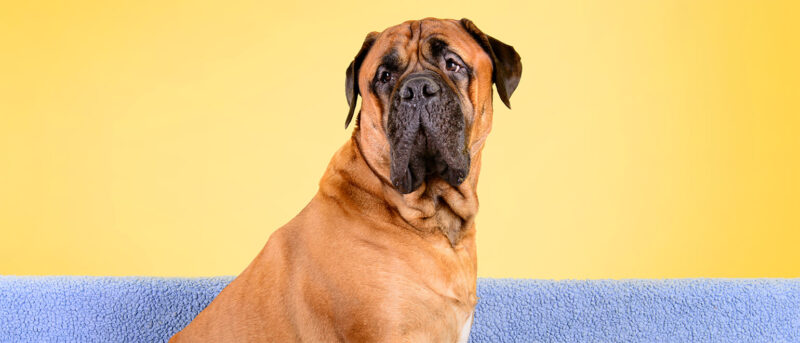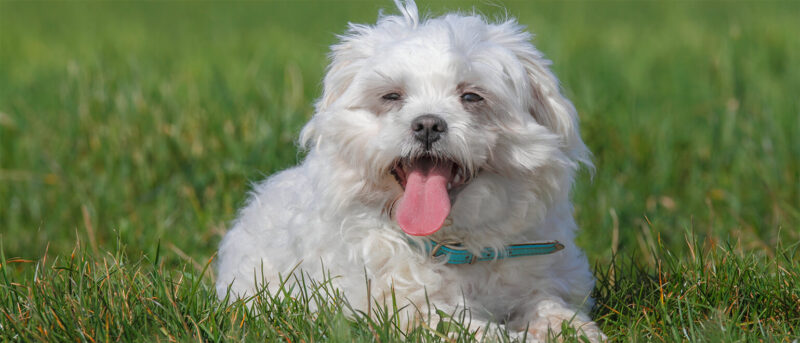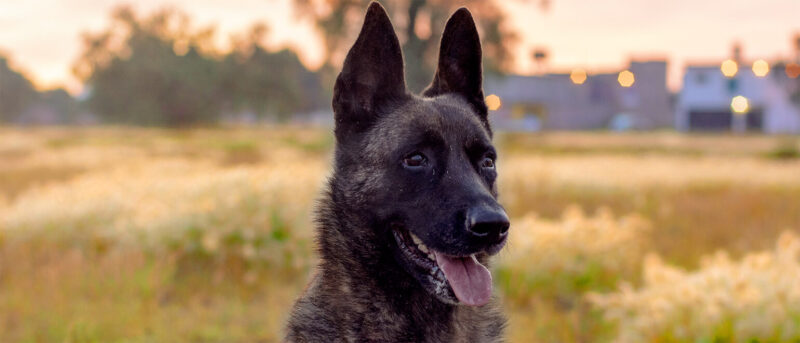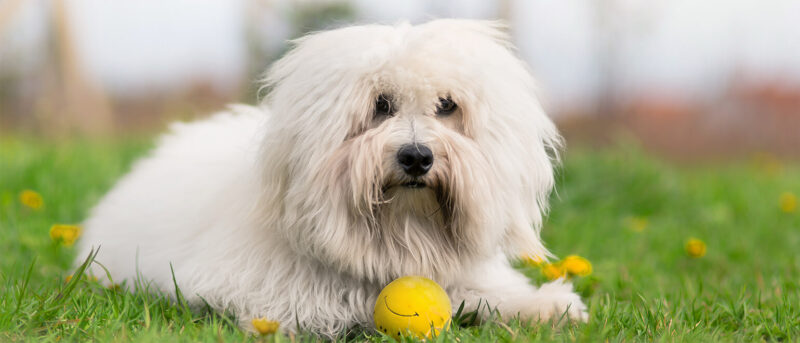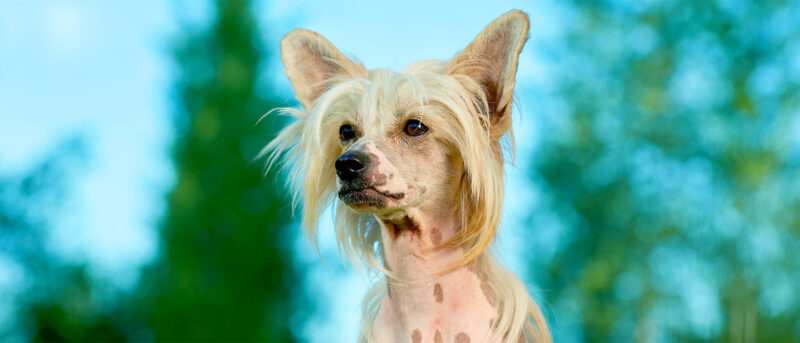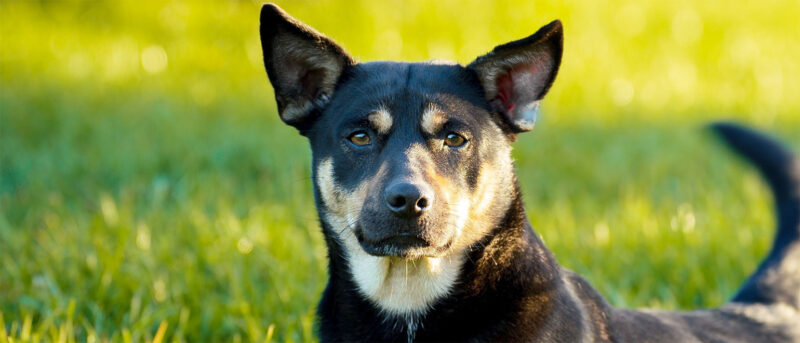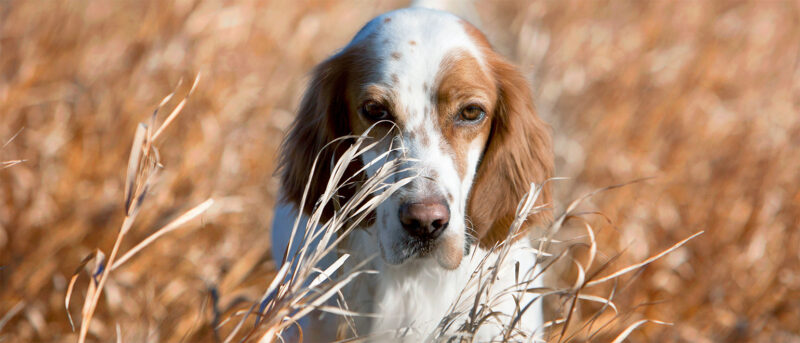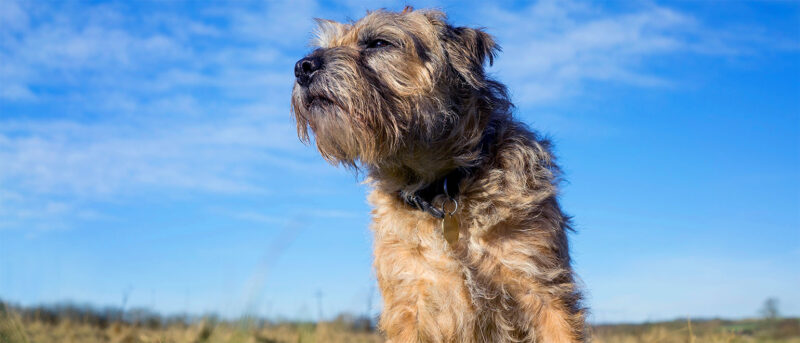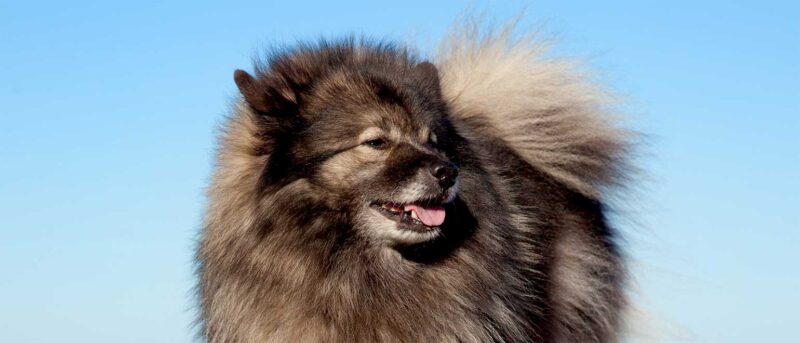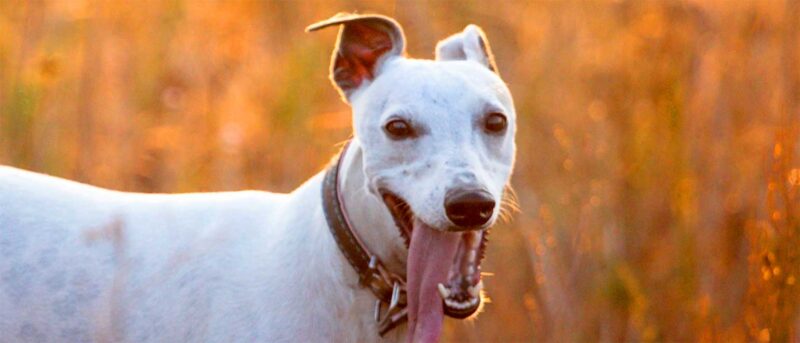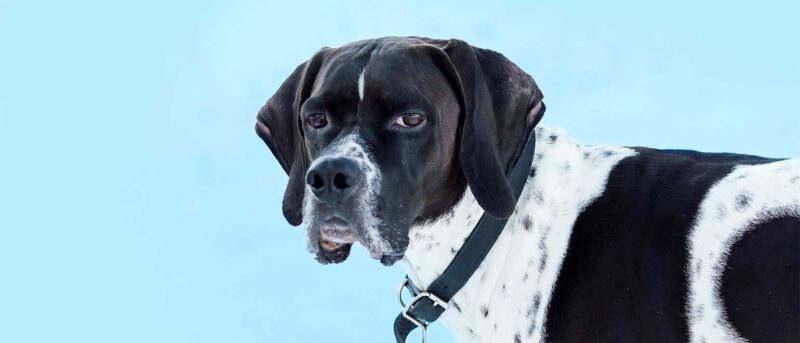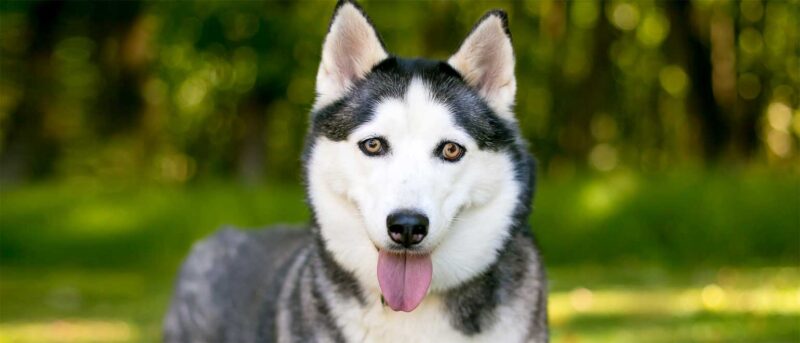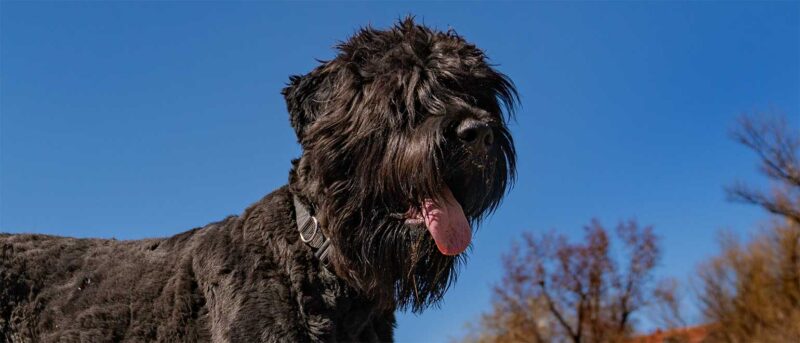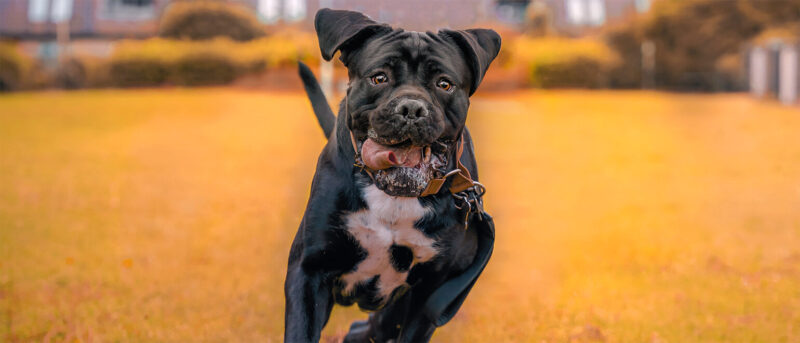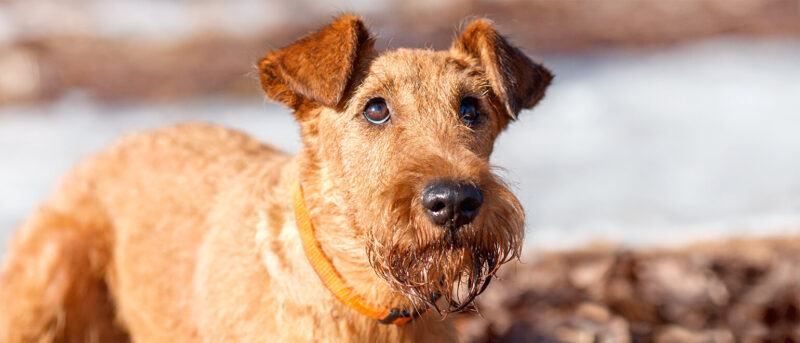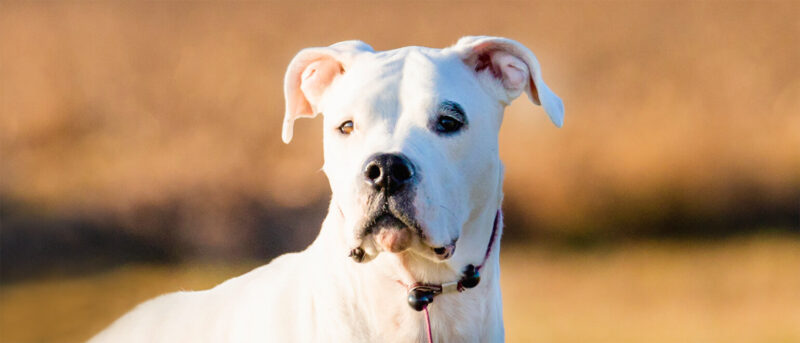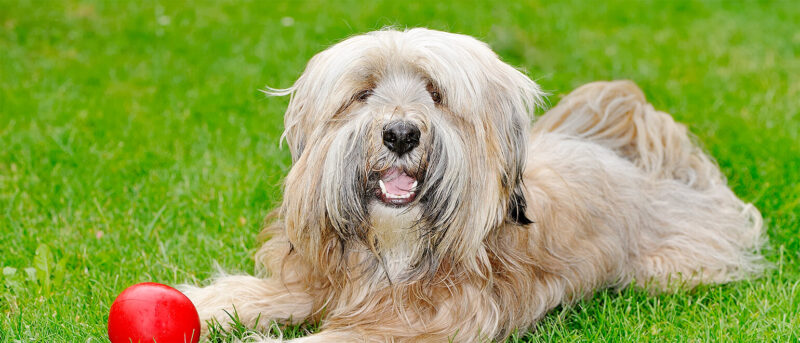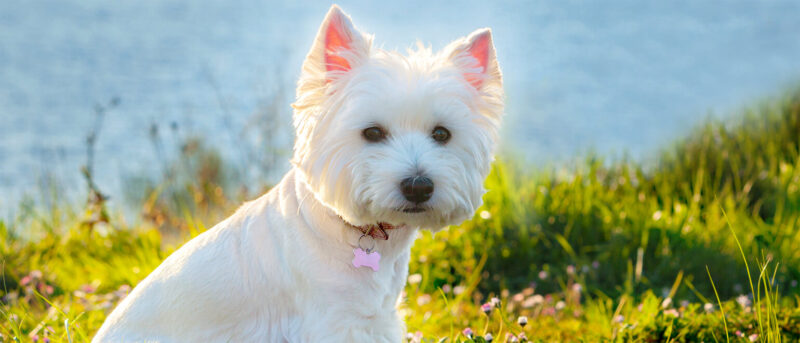Newfoundland Dog: All About This Giant, Lovable Breed
Newfoundlands are beautiful, fluffy dogs that look like they just hopped out of a magical fairy tale. Also referred to as “Newfies”, these giant dogs are loveable and sweet-tempered. While they may not be as common as other breeds like Golden Retrievers or Labradors, you have most certainly seen these extra-large dogs depicted in both […]
Newfoundlands are beautiful, fluffy dogs that look like they just hopped out of a magical fairy tale. Also referred to as “Newfies”, these giant dogs are loveable and sweet-tempered. While they may not be as common as other breeds like Golden Retrievers or Labradors, you have most certainly seen these extra-large dogs depicted in both books and films.
Author J.M Barrie immortalized this Canadian dog breed in his beloved children’s book, Peter Pan with the character, Nana. Nana perfectly captures the gentle nature and doting nature of the Newfoundland dog. To learn more about this lovely dog breed, just keep scrolling!
Newfoundland Dog Breed Characteristics [Physical]
Newfoundland dogs are as big as they are fluffy! These gentle giants are considered extra-large dogs and get their signature fluffy look due to their flat, water-resistant double coat. While their outer coat is long and feels coarse, their undercoat is soft and thick. Newfies are considered working dogs and require daily exercise.
Head
One of the signature physical attributes of the Newfoundland dog is their large head. While their noggin is impressive in size, they’re contrasted by their small ears that lie close to the head. Typically, Newfies have dark brown eyes but it is not uncommon to find Newfoundland dogs with lighter eyes, especially with brown or gray-coated dogs.
Body
Newfoundland dogs get most of their mass from their large bones. In addition to their heavy bones, Newfies also have a powerful muscular frame that allows them to swim against the currents and waves to assist with water rescue and lifesaving. In addition to their strong muscles, Newfoundlands also have webbed paws that help them to paddle easily through the water. It’s no wonder Newfoundlands were originally bred and used as working dogs for the fishermen in Newfoundland. They’re excellent swimmers!
Limbs
Newfoundlands are majestic with their large frame and laid-back personality. This extra-large breed features muscular shoulders and strong forelegs that run parallel to each other. Their hind legs are similarly straight and muscular.
Newfoundland Dog Breed Size
While Newfoundland puppies are small and cute, they will eventually grow anywhere from 26 to 28 inches tall. While that may seem an impressive stat, Newfies are even longer than they are tall! Generally speaking, this fluffy dog breed can get up to 3.5 feet tall. The longest Newfoundland dog ever recorded came in at a whopping 7 feet long! That’s a big dog!
Aside from their imposing height and length, this extra-large breed also weighs quite a bit. Male Newfies can weigh anywhere from 130 to 150 pounds while females can weigh around 100 to 120 pounds. Think of them as a fluffy weighted blanket!
Newfoundland Dog Personality
Newfoundland dogs make wonderful family dogs. Their kind and good-natured personality makes them giant teddy bears. While this breed is not known for barking, they are watchful and willing to protect their loved ones. There have even been instances of Newfoundland owners being altered to a fire by their dogs.
Intelligent
Newfoundland dogs are very intelligent and learn quickly. They also enjoy the process of working alongside their owner. Generally speaking, the intellect of a Newfoundland is comparable to a 2 to 2.5-year-old human child. It has been suggested that the average Newfoundland can learn around 165 words and commands, especially when paired with symbols. Yes, dogs can learn sign language!
Companionship
If you’re looking for a chill dog breed, definitely consider Newfoundland dogs! These giant puddles of love being surrounded by people and children. Newfies are very adaptable and can be introduced into a home with multiple pets (cats or dogs) quite easily.
While this dog breed is quite mellow, they are certainly not lazy. They are people pleasers, making them easy to train, and they are natural working dogs. Newfies often shadow their owners and follow them around the house, always making sure to keep an eye on them and staying ready to help at any given time.
Alertness
While you may hear a woof from time to time during playtime, well-trained Newfoundlands only bark to alert their owners and let others know that they are on guard duty. Since these large dogs were bred as working dogs to help fishermen, they are predisposed to being naturally alert and inclined to help people. These water-loving dogs have a variety of abilities that assist them in guarding property, pulling sleds, and even performing water rescues!
Newfoundland Dog Breed Exercise
Despite their impressive build, Newfoundland dogs don’t require intensive exercise and are happy to become fluffy couch potatoes. Although they’re happy to laze around the house, they should keep a regular and consistent exercise schedule.
In addition to daily walks, you can keep your dog healthy and entertained with a variety of activities. It’s important to try a variety of activities and see which one interests them the most. Pet owners can try:
- Short runs
- Hiking
- Fetch
- Swimming
With their waterproof coat, webbed feet, and impressive lung capacity, these dogs were bred to be great swimmers. If you have access to water, definitely start your pup’s exercise journey there. Otherwise, the Kennel Club recommends up to an hour of exercise a day for Newfoundlands.
Newfoundland Dog Breed Training
Is there anything cuter than taking home an adorable fluffy Newfie puppy? Probably not! As you can imagine, Newfoundland puppies are larger than most dog breeds and take longer to physically and mentally mature compared to smaller dog breeds like Chihuahuas and Yorkies. It is recommended by dog training experts that you start training your Newfoundland puppy the moment you take them home and continue throughout the first few years of their life.
Since this breed takes longer to mature than others, responsible Newfoundland breeders will generally keep Newfie puppies longer than with other breeds. Around the 10 to 12-week age mark, these puppies are usually screened for heart conditions before leaving the breeder. During this time, ethical breeders will also introduce their Newfoundland puppies to safe socialization with sounds and textures.
Phases of Training
Once your puppy arrives at your home around 12 to 18 weeks of age, it’s time to start building healthy routines. It’s important to start with the fundamentals like potty training, crate training, and simple commands like “sit down” and “come here”. Rewarding your dog for completing the commands successfully is key. You can use treats and dog toys to incentivize them.
Young pups of all breeds often explore their environment using their mouths, especially when they’re teething. This stage of growth makes teaching the commands “give/drop” and trading them for toys essential.
Between 4 to 8 months of age, your Newfoundland puppy enters what we affectionately call the “teddy bear phase”. Despite their large size, these pups are still emotionally immature, requiring consistent guidance and training. It’s essential to maintain the foundational training initiated earlier by exposing them to various stimuli such as sounds, different environments, and people of all ages. This ongoing exposure ensures their continued socialization and prevents regression, safeguarding the progress both you and your puppy have achieved together!
Newfoundland Dog Breed History
The rich legacy of the Newfoundland breed is rooted in their remarkable working capabilities. Throughout history, sailors have relied on these sturdy canines to execute a variety of tasks while sailing the treacherous waters of the North Atlantic. The original “ship dog”, this breed was tasked with jobs like transporting ropes ashore, retrieving lost fishing gear and even rescuing humans. The Newfoundland’s strength and dense double-layered coat rendered it exceptionally adept at its maritime duties. While their physical prowess has made this breed an extremely helpful working dog, this breed’s gentle and mild-mannered nature has endeared them to people throughout history, solidifying the Newfoundland’s place as both a cherished companion and invaluable working partner.
It is believed that the Newfoundland breed originated from dogs brought to the Canadian island of Newfoundland by English settlers in the 1800s. While this is the most commonly believed origin theory, there are several others in existence. Here are a few other popular theories on the Newfoundland’s origin:
- Newfies were developed and bred from the black ‘bear’ dogs transported to Newfoundland and the Americas by Vikings around 1000 A.D.
- They may have evolved from the American Black Wolf or other wild native dogs.
- Newfoundland dogs may have been developed from explorers’ inter-breeding of European dogs in the 15th and 16th centuries.
The earliest documented mention of this breed dates back to 1775, attributed to George Cartwright, an entrepreneur, sportsman, and diarist, who bestowed the name of the breed’s place of origin upon his own dog. Throughout the 18th century, the Newfoundland breed gained popularity, emerging prominently in literature and journals of the time. The breed’s formal debut occurred in 1860 at a national dog show in Birmingham, England, marking its inaugural appearance in an official capacity. Six Newfoundlands participated in this milestone event, signaling the breed’s recognition and ascent within the world of canine enthusiasts and breeders.
Common Health Problems Found in the Newfoundland Dog
Newfoundlands typically have a lifespan ranging from 8 to 10 years on average. Regrettably, they are susceptible to a few serious health conditions. This underscores the critical importance of purchasing from ethical breeders who prioritize the health and well-being of their dogs by ensuring thorough veterinary screening before selling their puppies. Some common health issues that Newfoundlands may encounter include:
Gastric Torsion
Gastric Dilatation-Volvulus is the technical name of Gastric Torsion. The swelling or bloating of the stomach often occurs due to the ingestion of air. This health condition arises from an abnormal buildup of air, fluid, or foam within the dog’s stomach. Signs of Gastric Torsion in dogs may include excessive drooling, accompanied by the presence of saliva and froth around the mouth. Additionally, your Newfoundland might attempt to vomit, producing little to no material, while the abdomen appears distended or swollen.
Sub-Aortic Stenosis
This health condition primarily affects dogs and is rarely seen in cats, with a higher prevalence in giant breeds like Newfoundlands. It involves the narrowing of the area beneath the aortic valve, leading to an obstruction of blood flow within the heart. The severity of this narrowing can vary from mild to severe. In cases of moderate to severe narrowing, the heart is forced to exert more effort, posing potential risks to its health. Symptoms of severe cases may manifest as weakness, labored breathing, and fainting.
Entropion
Entropion, a genetic condition, involves the inversion or inward folding of a portion of the eyelid, potentially leading to irritation or scratching of the eye’s surface by eyelashes or hair. The primary genetic determinant of this condition is facial structure. Giant breeds, such as the Newfoundland, often exhibit an abundance of laxity in the ligaments surrounding the outer corners of their eyes, resulting in potential inward folding of the eyelids’ outer edges.
To safeguard your dog’s health, it is important to maintain routine check-ins with your veterinarian. This ensures that your dog remains in optimal health and helps address any potential concerns quickly before they get out of hand.
How to Care for a Newfoundland Dog
While Newfoundlands are bred to be great swimmers, you don’t have to live near a lake or beach for them to be happy! That being said, this big dog breed does require some space for activities. While they love living indoors with their pet owners, it’s important to let them enjoy outdoor activities.
Make sure you bring some fresh water with you to keep them hydrated while they romp outside. The dense fur coat of the Newfoundland is equivalent to wearing multiple jackets, making overheating a real concern on sunny days. Because of their heavy fur coat, grooming is an integral part of caring for your Newfoundland.
This gentle giant loves playing fetch, running around in the backyard, and occasion trips to a lake or pool! Newfoundlands are easygoing dogs and what they love most is attention and bonding time with their owners.
Nutrition and Feeding for a Newfoundland Dog
Newfies certainly require plenty of food and water! This breed gains on average a whopping 100 pounds in their first year. The feeding schedule for the first six months of a Newfoundland pup includes 2 cups of dog food a day, three times a day. This can be broken up into three separate meals for your pup.
Contrary to popular belief, this large food amount does not increase as your dog ages. Once your Newfoundland is an adult, all they need is about 2 to 3 cups of food twice a day. You can modify this feeding schedule by breaking it up into three meals instead of two but that is up to you and your dog’s needs.
It is important to select dog food that is appropriate for their size. This helps your Newfoundland to receive all the nutrients and minerals they need to live healthily. When selecting dry dog food, prioritize options containing essential components such as animal protein, grains, vitamins, minerals, and antioxidants. Alternatively, raw diets may incorporate organ meat, muscle meat, raw eggs, and vegetables suitable for dogs. However, it’s important to note that certain foods should be avoided for your Newfoundland’s well-being, including:
- Avocado
- Tomatoes
- Cherries
- Onions
- Grapes
Coat Color and Grooming
This large working dog comes in many different colors, including solid black, gray, brown, and Landseer (a white coat with black markings). The beautiful coat of the Newfoundland requires brushing at least 2 to 3 times a week. Many dog owners often hire a professional dog groomer to assist in keeping their dog’s coat brushed. Brushing their fur helps to rid them of dead hair and it prevents tangling and matting. Their long coat also makes them more prone to getting dirty. It’s not unusual for them to have muddy paws after a walk or get leaves stuck in their fur.
In addition to brushing their long coat, it is also recommended you brush your Newfoundland dog’s teeth 2 to 3 times a week to assist in removing tartar buildup. Brushing their teeth also helps to prevent gum disease and stinky dog breath. Routine nail trims are also necessary for any dog’s well-being. If their nails get too long, they can dig into their sensitive paw pads and cause tremendous discomfort. Last but not least is ear care. Regularly inspecting your dog’s ears for cleanliness can proactively prevent future ear infections, potentially saving you an unnecessary trip to the vet.
Children and Other Pets
As we’ve said before, Newfoundlands are a gentle and loving dog breed that loves to be around children. They are friendly, laidback, and can be protective when necessary. If your dog has been socialized from an early age, they do tend to get along with other dogs and cats. If you plan on adopting multiple pets, it is crucial to expose your Newfoundland puppy to different people, animals, and environments.
Newfoundlands are very similar to the darling depiction they received in Walt Disney’s animated film, Peter Pan. While Newfies are very gentle despite their large size, it’s a good idea to supervise children when they’re around any animal.
Newfoundland Dog Rescue Groups
Thankfully, there are many kind-hearted Newfoundland enthusiasts and rescue groups across the globe that make it their mission to find loving forever homes for these gentle giants. They seek to bring awareness of this historic dog breed and place them in homes that will care for them. If you’re interested in adopting a Newfoundland, here are a few rescue groups to check out:
- The Newfoundland Club of Northern California: The mission of this terrific California-based rescue group is to find homes for displaced purebred Newfoundlands. They work with owners, dog breeders, and animal shelters to find homes for any Newfoundland that may need one.
- Newfoundland Club of America: The American Kennel Club recognizes this nationwide club and its mission to protect and advance the interests of Newfoundlands. This important Newfie group is committed to bringing awareness to this breed and providing the public with helpful information about these dogs and resources.
- Newfoundland Rescue Program: This important animal group has made it their mission to preserve and protect the Newfoundland breed. They rescue Newfoundlands that may be abused, neglected, abandoned, or in animal shelters.
Newfoundland Dog Breed Organizations
Rescue groups aren’t the only reason for Newfoundland organizations. There are also many organizations that hold events for enthusiasts and owners to partake in. These Newfoundland groups are excellent ways to socialize your young pup, garner support and information from other Newfie owners and they can help those who are interested in adopting Newfoundlands for the first time!
The previously discussed Newfoundland Club of America is one of the most well-known groups out there. As the parent organization, the Newfoundland Club of America (NCA) oversees numerous regional clubs that make an impact. While these regional clubs operate independently, they serve as invaluable sources of information for Newfoundland enthusiasts. In California alone, you can find notable clubs such as:
- Trinity Cove of Newfoundlands
- Newfoundland Club of San Diego
- The Newfoundland Club of Northern California
More About the Newfoundland Dog
When it comes to Newfoundland dogs, their hearts are even bigger than they are! While they’re one of the largest dog breeds in existence, they make incredible family pets that love to please their owners and snuggle.
If you love the idea of a loyal companion shaped like an oversized teddy bear, the Newfoundland dog is for you!



